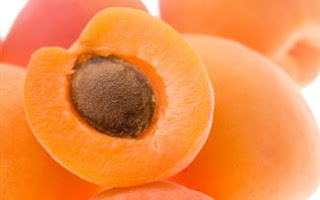The USA has the largest production in the world. and more specifically California, followed by Iran, China, Spain, Syria and France. Greece ranks 6th in Europe with a production of more than 40.000 tons per year.
Nutrient content
It is particularly rich in vitamin A and contains carbohydrates, pectin, vitamin C, vitamin B1, vitamin B2, β-carotene, iron, calcium, potassium and almost all other trace elements and vitamins, while also being a major source of cellulite. It does not contain any cholesterol or sodium.
Health Benefits
Unfortunately, because apricot has not been studied individually, its medicinal properties have not been fully detected. However, apricots are high on the list of fruits and vegetables that help prevent some cancers (mainly Breast J. 2007) - mainly lung and possibly pancreatic - which are associated with smoking and their tumors are extremely difficult to treat.
This is because apricots, like other light orange fruits or vegetables, contain large amounts of beta-carotene, a form of vitamin A that has been shown in laboratory tests to be potent against lung and skin cancer.
Beta-carotene also strengthens the immune system by increasing the activity of protective natural killer cells, which are a distinct population of lymphocytes that have the ability to attack virus-infected cells.
It should not be overlooked that β-carotene is the most common carotenoid found in foods of plant origin. The most important of these are deep yellow or orange fruits and vegetables, such as apricots, melons, tomatoes and carrots. Studies show that people who eat a lot of the above fruits and vegetables have lower rates of lung and laryngeal cancer.
Scientists believe that the main protective factor is beta-carotene, although they argue that there are other unknown factors in apricots and other foods that contribute positively.
Today, apricots are considered a food strongly anti-cancer and ideal for ex-smokers. Beta-carotene-rich foods appear to have the potential to reduce the obvious cancerous effects of smoking.
Apricots are also indicated for anemia, mainly due to their high iron content as they promote hematopoiesis. They are also valuable to those who follow a weight loss diet, because the carbohydrates they contain, satisfy the feeling of sweetness, without adding many calories.
They are generally very digestible and nutritious as they are recommended for children who show delayed development but also during recovery. It is used fresh for the treatment of diarrhea, due to its astringent action, instead it is used dried for the treatment of constipation.
We therefore understand that nature, through its food, not only provides us with the nutrients needed for our survival but also generously gives us valuable active substances that shield our health.
Suggested way of consumption
Look for apricots that are not scratched, deformed, moldy or wrinkled. Buy only what you want to consume in the next few days. Before consuming them you should wash them with plenty of warm water. For maximum benefit, it is better to eat dried apricots. They have a higher content of β-carotene than raw (J Agric Food Chem. 2005).
Pay special attention, however, to the color of the fruit and more to the dried apricots because very often they are sulfurized to get a light orange color instead of their natural one which is brown orange. Apricots that are not sprayed with sulfur are tastier than the rest. But also pay attention to its stone. More specifically, the nucleus is poisonous due to the amygdalin it contains. Eating too many seeds can cause severe poisoning, especially in children.
Suggested purchase and maintenance
May and June are considered harvest seasons. It has been observed that whole ripe apricots contain 200% higher carotenoids than unripe apricots. Choose well-colored, tender fruits that are neither greenish nor prone to wrinkles. The fleshy and juicy wrist is delicious and sweet. The outside of the apricot (skin) is thin, usually fluffy and yellow with a few red spots on the front.
Suggested way of cooking
Apricot is eaten fresh as a fruit. It can also be eaten dried, made into jam, dessert, compote, used in confectionery and made into liqueur, juice and mixed juice ingredient.
Source: iatronet.gr

